Classmates.com 2010 Annual Report Download - page 7
Download and view the complete annual report
Please find page 7 of the 2010 Classmates.com annual report below. You can navigate through the pages in the report by either clicking on the pages listed below, or by using the keyword search tool below to find specific information within the annual report.-
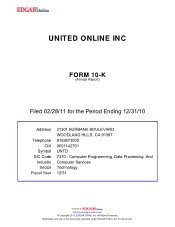 1
1 -
 2
2 -
 3
3 -
 4
4 -
 5
5 -
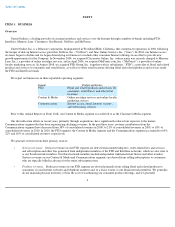 6
6 -
 7
7 -
 8
8 -
 9
9 -
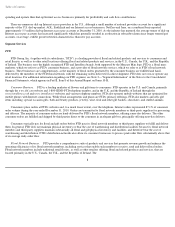 10
10 -
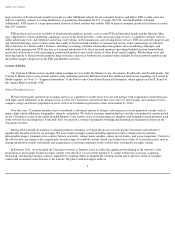 11
11 -
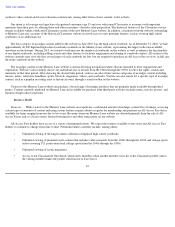 12
12 -
 13
13 -
 14
14 -
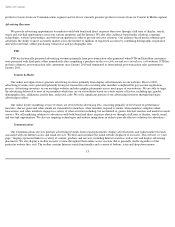 15
15 -
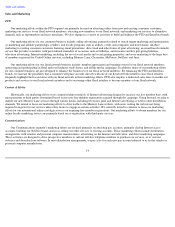 16
16 -
 17
17 -
 18
18 -
 19
19 -
 20
20 -
 21
21 -
 22
22 -
 23
23 -
 24
24 -
 25
25 -
 26
26 -
 27
27 -
 28
28 -
 29
29 -
 30
30 -
 31
31 -
 32
32 -
 33
33 -
 34
34 -
 35
35 -
 36
36 -
 37
37 -
 38
38 -
 39
39 -
 40
40 -
 41
41 -
 42
42 -
 43
43 -
 44
44 -
 45
45 -
 46
46 -
 47
47 -
 48
48 -
 49
49 -
 50
50 -
 51
51 -
 52
52 -
 53
53 -
 54
54 -
 55
55 -
 56
56 -
 57
57 -
 58
58 -
 59
59 -
 60
60 -
 61
61 -
 62
62 -
 63
63 -
 64
64 -
 65
65 -
 66
66 -
 67
67 -
 68
68 -
 69
69 -
 70
70 -
 71
71 -
 72
72 -
 73
73 -
 74
74 -
 75
75 -
 76
76 -
 77
77 -
 78
78 -
 79
79 -
 80
80 -
 81
81 -
 82
82 -
 83
83 -
 84
84 -
 85
85 -
 86
86 -
 87
87 -
 88
88 -
 89
89 -
 90
90 -
 91
91 -
 92
92 -
 93
93 -
 94
94 -
 95
95 -
 96
96 -
 97
97 -
 98
98 -
 99
99 -
 100
100 -
 101
101 -
 102
102 -
 103
103 -
 104
104 -
 105
105 -
 106
106 -
 107
107 -
 108
108 -
 109
109 -
 110
110 -
 111
111 -
 112
112 -
 113
113 -
 114
114 -
 115
115 -
 116
116 -
 117
117 -
 118
118 -
 119
119 -
 120
120 -
 121
121 -
 122
122 -
 123
123 -
 124
124 -
 125
125 -
 126
126 -
 127
127 -
 128
128 -
 129
129 -
 130
130 -
 131
131 -
 132
132 -
 133
133 -
 134
134 -
 135
135 -
 136
136 -
 137
137 -
 138
138 -
 139
139 -
 140
140 -
 141
141 -
 142
142 -
 143
143 -
 144
144 -
 145
145 -
 146
146 -
 147
147 -
 148
148 -
 149
149 -
 150
150 -
 151
151 -
 152
152 -
 153
153 -
 154
154 -
 155
155 -
 156
156 -
 157
157 -
 158
158 -
 159
159 -
 160
160 -
 161
161 -
 162
162 -
 163
163 -
 164
164 -
 165
165 -
 166
166 -
 167
167 -
 168
168 -
 169
169 -
 170
170 -
 171
171 -
 172
172 -
 173
173 -
 174
174 -
 175
175 -
 176
176 -
 177
177 -
 178
178 -
 179
179 -
 180
180 -
 181
181 -
 182
182 -
 183
183 -
 184
184 -
 185
185 -
 186
186 -
 187
187 -
 188
188 -
 189
189 -
 190
190 -
 191
191 -
 192
192 -
 193
193 -
 194
194 -
 195
195 -
 196
196 -
 197
197 -
 198
198 -
 199
199 -
 200
200 -
 201
201 -
 202
202 -
 203
203 -
 204
204 -
 205
205 -
 206
206 -
 207
207 -
 208
208 -
 209
209 -
 210
210 -
 211
211 -
 212
212 -
 213
213 -
 214
214 -
 215
215 -
 216
216 -
 217
217 -
 218
218 -
 219
219 -
 220
220 -
 221
221 -
 222
222 -
 223
223 -
 224
224 -
 225
225 -
 226
226 -
 227
227 -
 228
228 -
 229
229 -
 230
230 -
 231
231 -
 232
232 -
 233
233 -
 234
234 -
 235
235 -
 236
236 -
 237
237 -
 238
238 -
 239
239 -
 240
240 -
 241
241 -
 242
242 -
 243
243 -
 244
244 -
 245
245 -
 246
246 -
 247
247 -
 248
248 -
 249
249 -
 250
250 -
 251
251 -
 252
252 -
 253
253 -
 254
254 -
 255
255 -
 256
256 -
 257
257 -
 258
258 -
 259
259 -
 260
260 -
 261
261 -
 262
262 -
 263
263 -
 264
264 -
 265
265 -
 266
266 -
 267
267 -
 268
268 -
 269
269 -
 270
270 -
 271
271 -
 272
272 -
 273
273 -
 274
274 -
 275
275 -
 276
276 -
 277
277 -
 278
278 -
 279
279 -
 280
280 -
 281
281 -
 282
282 -
 283
283 -
 284
284 -
 285
285 -
 286
286 -
 287
287 -
 288
288 -
 289
289 -
 290
290 -
 291
291 -
 292
292 -
 293
293 -
 294
294 -
 295
295 -
 296
296 -
 297
297 -
 298
298 -
 299
299 -
 300
300 -
 301
301 -
 302
302 -
 303
303 -
 304
304 -
 305
305 -
 306
306 -
 307
307 -
 308
308 -
 309
309 -
 310
310 -
 311
311 -
 312
312 -
 313
313 -
 314
314 -
 315
315 -
 316
316 -
 317
317 -
 318
318 -
 319
319 -
 320
320 -
 321
321 -
 322
322 -
 323
323 -
 324
324 -
 325
325 -
 326
326 -
 327
327 -
 328
328 -
 329
329 -
 330
330 -
 331
331 -
 332
332 -
 333
333
 |
 |

Table of Contents
receive payment from consumers before paying florists or other third parties to fulfill product orders. Our Communications
segment does not generate products revenues and our Content & Media segment does not currently generate products revenues.
•
Advertising revenues.
Advertising revenues are derived from a wide variety of advertising, marketing and media
-
related
initiatives in each of our operating segments.
Industry Background
FTD Segment—Floral and Related Products and Services
Consumers
Floral industry retail purchases in the United States ("U.S."), including flowers, potted plants and seeds were approximately $35.2 billion in
2010, according to the U.S. Department of Commerce. Floral industry retail purchases in the United Kingdom ("U.K."), including fresh cut
flowers and indoor plants, were approximately £2.2 billion in 2008, according to Mintel, a market research company. Both the U.S. and U.K.
markets are highly fragmented with thousands of floral industry participants. The floral retail marketplace has evolved considerably in recent
years. The following sets forth some of the key market trends:
•
The increasing role of floral mass marketers, particularly those marketing floral products over the Internet and servicing a national
or international consumer base, has resulted in a growing percentage of floral orders being placed through floral mass marketers
versus traditional retail florists;
•
Consumer purchases of "cash and carry" flowers for every
-
day occasions have continued to shift away from traditional retail
florists and increasingly occur at supermarket and mass merchant retail locations;
• Traditional retail florists have become increasingly dependent on floral network services to provide incoming order volume to
offset business lost to the Internet, supermarket and mass merchant channels; and
• Traditional retail florists and floral mass marketers have expanded their product offerings to include a larger selection of gift
items.
Floral mass marketers, such as FTD and Interflora, generate floral orders from consumers via the Internet and telephone. Floral mass
marketers typically partner with third parties, including retail florists and direct ship merchants, to fulfill and deliver the marketers' floral product
orders. The floral mass marketers' share of retail floral purchases has expanded due to shifting consumer preferences towards purchasing floral
products online and the emergence of prominent brands with national or international exposure. Growing consumer interest in floral
arrangements shipped directly to the consumer via common carrier has also benefited floral mass marketers in recent years.
Traditional Retail Florists and Other Retailers
There were approximately 18,500 retail florists in the U.S. in 2008, according to the U.S. Census Bureau. The total number of retail florists
has declined in recent years, primarily due to floral products becoming increasingly available for purchase on the Internet and in other retail
channels as well as recent economic factors. Supermarkets, mass merchants and other retailers have established or increased their presence in the
floral products retail market in recent years by adding a variety of floral and related products to their merchandise assortments. The emergence of
supermarkets and mass merchants as increasingly important distribution channels within the floral products retail market has led many
traditional retail florists to expand their merchandise offerings to include giftware, indoor plants, outdoor nursery stock, and seasonal
decorations, among other items.
5
